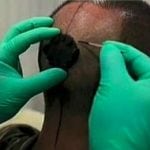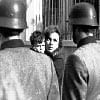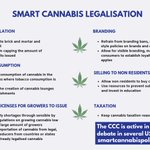
El Chapo trial shows Trump’s wall would have had little impact on kingpin’s drug smuggling plots
NEW YORK — Some of the drugs were hidden in passenger cars, concealed in trucks in cans of jalapeños or stashed in tanker trains with ordinary loads of cooking oil. Others were sent beneath the border in sophisticated tunnels.
The 10 weeks of testimony at the trial of Joaquín Guzmán Loera, the drug lord known as El Chapo, have revealed that his innovative smuggling network typically went through legal checkpoints — not isolated stretches of the border where a wall might be an obstacle.
President Donald Trump’s plan to build a wall along the southwestern border has not been mentioned at the trial, but it has lurked in the background of Guzmán’s prosecution, a watershed moment in America’s war on drugs.
The trial, in U.S. District Court in Brooklyn, is the first time that American federal prosecutors have publicly revealed the inner workings of Guzmán’s Sinaloa drug cartel, offering the most extensive details yet on the organization’s structure, financing and distribution methods. In doing so, prosecutors have relied on firsthand experts: a long list of Guzmán’s own former underlings and allies.
Though Trump has primarily pitched his border wall as a way to stop illegal immigration, he has recently suggested that it would also help allay the cross-border drug trade.
“If we build a powerful and fully designed see-through steel barrier on our southern border, the crime rate and drug problem in our country would be quickly and greatly reduced,” he said Saturday. “Some say it could be cut in half.”
He added, “We can stop heroin.”
But the Guzmán trial has indicated that stopping the flow of drugs into the United States might be more complicated than that. Through the testimony of people who worked with Guzmán, prosecutors have shown that his cartel for decades was endlessly creative, constantly inventing new methods to circumvent detection.
“What you’re hearing in this trial is what front-line border workers observe throughout,” said Doris Meissner, who served as the commissioner of the Immigration and Naturalization Service from 1993 to 2000 and now works at the Migration Policy Institute, an advocacy group.

This Oct. 26, 2017 file photo shows prototypes of border walls in San Diego.
Meissner added, “The idea that people are walking drugs across the border as though they are illegal immigrants who would then be stopped by a wall across the border, that is not the pattern.”
But some supporters of the wall have noted that a physical obstacle along the border is needed as a safeguard to ensure the frontier is sealed as much as possible.
“It’s about checking all the boxes: sea, land, air, port of entry and the space between the port of entries,” said James Carafano, vice president for foreign policy and national security at the Heritage Foundation, a conservative-leaning think tank. “Otherwise you’re not implementing an effective border strategy. An effective strategy means that you create the most barriers possible. You don’t just close off one so they have 99 others.”
One thing revealed at Guzmán’s trial is that among his earliest — and favorite — smuggling methods was sneaking drugs across the border in normal-looking passenger cars with secret compartments hidden in their chassis. Witnesses have described how he often split loads among several vehicles to help ensure that at least some of them made the journey undetected.
But Guzmán also used more dramatic and unusual tactics to transport drugs.
At one point, testimony at the trial has shown, Guzmán sent tons of cocaine across the border in cans of jalapeños marked with the label La Comadre chiles. The cans were stacked on pallets in the backs of commercial tractor-trailers, which simply drove through official border entry points. To protect his product from being found, witnesses said, Guzmán often placed the cans filled with cocaine in the middle of the pallets, surrounded by cans with actual chiles.
Proponents of the wall have said such a structure could help improve inspections at the border.
“One of the big problems is we have too many people standing on guard between and at points of entry and not enough people doing inspections, analysis and intelligence, so the wall will certainly channel the flow into areas you can manage, analyze and search more thoroughly,” said John P. Walters, former director for drug control policy for President George W. Bush and chief operating officer for the Hudson Institute, a conservative think tank. “The wall itself does not stop all flow, but the wall becomes a way to stop all flow.”
He added: “I’m not saying a wall will do everything, but what I’m saying is: How do you try to stop it without a wall?”
But Guzmán’s methods went beyond regular border crossings. One witness at the trial, Tirso Martínez Sanchez, told jurors in December that he personally helped persuade Guzmán to use commercial tanker trains that traveled on cross-border rail lines.
According to Martínez, cartel operatives first created front companies that appeared to be selling legal items like cooking oil. After shipping a few real loads of oil from Mexico to various U.S. cities to make it seem as if the company was legitimate, Guzmán’s workers then packed cocaine into secret compartments in the tankers and sent them over the border.
In the United States, other operatives received the trains at a network of secret warehouses, which, Martínez said, were located mostly on rail spurs so that the trains could be driven directly into them from major cargo rail lines.
Sea routes were another, if a bit less frequent, means of moving drugs into the United States. This month, for instance, witnesses testified that Guzmán once sent a load of marijuana by boat from Mexico north on the Pacific Ocean to the coast near San Diego. The drugs were meant to be unloaded offshore by smaller boats. The shipment never reached San Diego, and three of Guzmán’s workers were arrested.
The kingpin also sent bulk shipments of cash through normal border checkpoints in the opposite direction — from the United States to Mexico. As early as 1989, in fact, one of Guzmán’s brothers, Arturo Guzmán Loera, was briefly detained at an Arizona port of entry after border agents there found more than $1 million packed into the tailgate and side panels of his black Ford Bronco.

A journalist reports from the exit of the tunnel that according to authorities, drug lord Joaquin “El Chapo” Guzman used to escape from the Altiplano maximum security prison in Almoloya, west of Mexico City, Tuesday, July 14, 2015.
Carafano said he understood that drug smugglers would always try to find new methods, and that the wall would simply be “part of the mix.”
He added, “It is part of the tool, but you have to do all three simultaneously: at the port of entry, on the border and you have to do it at sea, so you’re creating just a series of bad options for the smugglers.”
Then there is the matter of El Chapo’s most famous smuggling method: tunnels.
Early in the trial, Jesus Zambada García, one of Guzmán’s top logistics chiefs, told jurors at the trial how workers had dug a tunnel in the early 1990s under an innocuous-looking ranch house in Agua Prieta, Mexico, that reached a warehouse in Douglas, Arizona.
The entrance on the Mexican side, Zambada said, was hidden under a pool table that could be raised off the ground by hydraulic lifts. The lifts were activated by turning what appeared to be an ordinary garden hose valve in the yard outside.
And the tunnel exit in the warehouse in Arizona?
Remarkably, Zambada said, it was located only blocks from a local office of Customs and Border Protection.

Some pregnant women don't believe cannabis is harmful to their fetus
Read More

Chronicle AM: Trump Repeats Border Wall Drug Falsehoods, Malaysia Drug Policy Shift, More… (1/21/19)
Read More

High Times to Acquire Spannabis, Europe’s Largest Cannabis Event
Read More

Monday, January 21, 2019 Headlines | Marijuana Today Daily News
Read More



